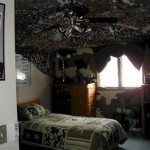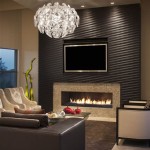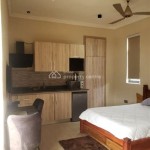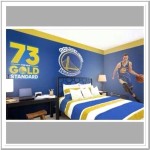How To Decorate a Side Table In Your Living Room
The side table, a seemingly humble piece of furniture, serves a vital role in defining both the functionality and aesthetic appeal of a living room. Acting as a convenient surface for lamps, books, drinks, or decorative objects, a well-styled side table enhances the room’s overall ambiance. Thoughtful decoration transforms this practical element into a focal point that reflects personal style and complements the existing décor.
Effective side table decoration involves a curated selection of objects that balance functionality, visual interest, and spatial considerations. It necessitates an understanding of scale, color palettes, and the principles of design to create a harmonious and inviting arrangement. The ultimate goal is to integrate the side table seamlessly into the room's design scheme while simultaneously providing a useful and attractive surface.
Understanding the Purpose and Context
Before embarking on the decoration process, it is crucial to understand the side table’s primary purpose within the living room. Is it intended primarily for functional use, such as a surface for reading materials and a lamp next to a favorite armchair? Or is its role more decorative, serving to display cherished objects and enhance the room's visual appeal? The answer to this question heavily influences the selection of items and the overall styling approach.
Consider the side table’s location in the room and its proximity to other furniture. A side table positioned next to a sofa may require a different styling approach than one situated beside an armchair. The height of the table should also be considered in relation to the surrounding furniture. Ideally, the table should be at a comfortable height for reaching items while seated. If the table is significantly lower than the adjacent seating, it may be more suited for purely decorative purposes. Conversely, a table that is too high can appear awkward and out of proportion.
Furthermore, the existing décor of the living room plays a significant role in guiding the side table's styling. The table's decoration should complement the overall design scheme, whether it be modern, traditional, bohemian, or eclectic. The choice of colors, materials, and textures should harmonize with the existing furniture, wall coverings, and accessories. Avoiding clashes in style and color is essential in creating a cohesive and visually appealing living space.
The size and shape of the side table are also critical factors to consider. A small, round side table may call for a simpler, more minimalist approach, while a larger, rectangular table can accommodate a more elaborate arrangement. The shape of the table should also be considered in relation to the surrounding furniture and the overall flow of the room. Round tables can soften angular spaces, while rectangular tables provide a more structured and formal feel.
Key Elements of Side Table Decoration
Successful side table decoration typically involves a thoughtful combination of several key elements, carefully chosen to create a balanced and visually interesting arrangement. These elements often include a lamp, books, decorative objects, and a tray or coaster.
The lamp is often the centerpiece of a side table arrangement, providing both functional lighting and visual height. The lamp's size and style should be carefully considered in relation to the table and the surrounding décor. A large, statement lamp can serve as a focal point, while a smaller, more subtle lamp can blend seamlessly into the background. The lampshade’s color and material should complement the room's color palette and overall style. Consider the type of lighting the lamp provides. A reading lamp should offer focused and directional light, while an ambient lamp can create a softer, more atmospheric glow.
Books add intellectual interest and visual texture to a side table arrangement. Select books that reflect personal interests or complement the room's décor. Arrange the books in stacks, either horizontally or vertically, to create visual height and depth. Use decorative bookends to add a touch of personality and prevent the books from toppling over. Consider the color and texture of the book covers when arranging the books, aiming for a cohesive and visually appealing stack.
Decorative objects add personality and visual interest to the side table. These can include vases, sculptures, picture frames, or small decorative boxes. Choose objects that reflect personal style and complement the room's décor. Vary the size, shape, and texture of the objects to create visual contrast. Arrange the objects in a way that is balanced and visually appealing, avoiding clutter and overcrowding. A tray or coaster is a practical addition to a side table, providing a convenient surface for drinks or small items. Choose a tray or coaster that complements the room's décor and adds a touch of elegance. A small decorative bowl can also serve a similar purpose, holding keys, coins, or other small items.
The arrangement of these elements is equally crucial. Aim for a balanced and visually appealing composition, considering the principles of scale, proportion, and visual weight. Avoid arranging all the items in a straight line or creating a cluttered and unbalanced appearance. Experiment with different arrangements until finding one that feels both functional and aesthetically pleasing.
Practical Considerations and Styling Tips
Beyond the aesthetic considerations, practical factors significantly influence the effectiveness of side table decoration. Ensuring the table remains functional and serves its intended purpose is paramount.
Accessibility is a key factor. Ensure that frequently used items, such as remote controls or reading glasses, are easily accessible. Avoid overcrowding the table with decorative objects that hinder access to essential items. The height of the table should also be considered in relation to the adjacent seating, allowing for comfortable reaching. If the table is too low, it may be difficult to reach items while seated. If it is too high, it can appear awkward and out of proportion.
Safety is also an important consideration, especially in households with children or pets. Avoid placing fragile or potentially hazardous items on the table where they could be easily knocked over. Secure lamps and other heavy objects to prevent them from tipping. Consider using cord management solutions to keep lamp cords and other wires out of the way and prevent tripping hazards. Sharp edges should be avoided, particularly if small children are present.
Scale and proportion are essential elements to consider when decorating a side table. The size of the objects should be proportionate to the size of the table. A large lamp on a small table can appear overwhelming, while a small lamp on a large table can appear insignificant. Similarly, the size of the decorative objects should be proportionate to the size of the lamp and the table. A large vase on a small table can appear unbalanced, while a small vase on a large table can get lost in the space. Experiment with different sizes and shapes to find a balanced and visually appealing arrangement.
Color and texture play a significant role in creating a cohesive and visually appealing side table arrangement. Choose colors and textures that complement the room's décor and create visual interest. Use contrasting colors to add pops of vibrancy and draw the eye to specific objects. Vary the textures to create visual depth and tactile interest. A combination of smooth and rough textures can add a sense of richness and complexity. Consider the materials used in the surrounding décor and choose objects that complement those materials. A wooden table may benefit from decorative objects made of metal, glass, or ceramic. A metal table may benefit from decorative objects made of wood, fabric, or natural materials.
Personalization is the key to creating a side table arrangement that reflects personal style and enhances the room's overall ambiance. Incorporate items that have personal significance, such as family photos, travel souvenirs, or cherished heirlooms. These items add a touch of personality and make the space feel more inviting and lived-in. Arrange the items in a way that is both visually appealing and meaningful. Tell a story through the arrangement, showcasing personal interests, experiences, and memories.
Regularly update the side table arrangement to keep it fresh and interesting. Swap out decorative objects, change the books, or add seasonal accents to reflect the changing seasons or personal preferences. This is a simple way to refresh the room's décor without making major changes. It also allows for experimentation and exploration of different styles and arrangements.
By considering these practical considerations and styling tips, one can transform a simple side table into a functional and aesthetically pleasing element that enhances the overall ambiance of the living room. The side table's decoration should reflect personal style, complement the existing décor, and serve its intended purpose effectively and safely.

How To Style An End Table Like A Pro Stonegable

Stylish Side Table Decor That Pulls A Room Together

Home Decor 101 How To Decorate End Tables The Turquoise

Side Tables And End A Guide To Decorating With Them

Home Decor 101 How To Decorate End Tables The Turquoise

27 Coffee Table Decor Ideas How To Style A Modern

6 Gorgeous End Table Decor Ideas How To Style An Mozie

Home Decor 101 How To Decorate End Tables The Turquoise

9 Gorgeous Accent Table Décor Ideas Living Spaces

9 Gorgeous Accent Table Décor Ideas Living Spaces
Related Posts







